Lemnul are uneori porțiuni cu colorații naturale nedorite sau culoarea lui naturală prea închisă nu permite obținerea unui finisaj foarte deschis, aproape alb. Probleme în ceea ce privește culoarea lemnului pot apărea și în urma prelucrărilor, nu dar din cauza naturale. În timpul uscării, al prelucrărilor mecanice sau al șlefuirii lemnului pot apărea pete sau colorații care trebuie îndepărtate, fără să fie afectată culoarea naturală a lemnului. În primul caz este necesară albirea lemnului, pe când în cel de-al doilea vorbim despre decolorarea lui. Decolorarea și albirea sunt două tehnici diferite, dar deseori în fabrici se folosește termenul de albire pentru ambele metode.
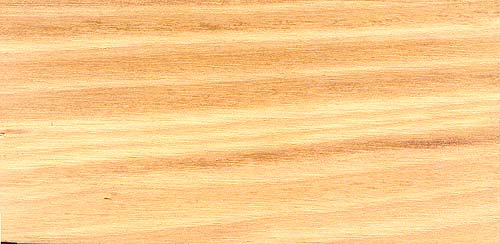
photo source: hoovedesigns.com
Decolorarea, un procedeu care îndepărtează petele apărute din diferite motive
Fading este necesară când pe lemn apar pete din cauza contactului cu metale, cu soluții de colorare sau adezivi. Pentru a le îndepărta se folosesc soluții mai puțin agresive. Acestea acționează asupra petelor fără a schimba culoarea naturală a lemnul.
Soluțiile folosite pentru decolorare pot fi amestecuri de diluanții sau soluții slabe de acizi sau baze. Pentru folosirea lor nu este nevoie de măsuri speciale de precauție, fiind substanțe care se folosesc de multe ori și în gospodărie. Totuși, pentru siguranță, trebuie folosite mănuși și ochelari de protecție.
O soluție frecvent folosită este sodium hypochlorite, adică înălbitorul de rufe obișnuit cu conținut de clor. Acesta atacă baițurile, culorile solubile în solvenți, dar nu schimbă culoarea lemnului și nu atacă nici culorile pe bază de pigmenți. Este cazul vopselelor sau al soluțiilor de colorare rezistente la condițiile de exterior (radiația UV a soarelui, în special). Hipocloritul se folosește diluat cu apa, diluția depinzând de cât de concentrat este. Se aplică cu pensula sau buretele, iar la final lemnul trebuie spălat cu apă. Pentru mai multă eficiență, spălarea poate fi combinată cu șlefuirea lemnului.

photo source: treelayers.ro
Tot hipocloritul de sodiu poate fi folosit când lemnul a fost atacat în mică măsură de mucegai. Atenție, nu este cazul lemnului atacat încă din faza de arbore, în picioare sau doborât. Blue mould – cum este denumit acest tip de mucegai – este un defect care scade foarte mult calitățile lemnului și care poate fi îndepărtat doar parțial și asta cu mare greutate. Hipocloritul nu acționează nici asupra mucegaiului apărut în timpul uscării cherestelei sau a celui intrat adânc în lemnul neprotejat aflat la exterior (terase, deck-uri, garduri). Hipocloritul acționează asupra acelui strat fin de mucegai negru care se depune uneori și pe lemnul protejat cu lac, dacă umiditatea este foarte mare și apa stagnează (băltește). Mucegaiul albastru se tratează ca o colorație a lemnului și poate fi îndepărtat doar parțial, prin albire cu o soluție concentrată 35% de perhydrol (apă oxigenată).
Petele negre superficiale apărute din cauza contactului lemnelor taninoase cu metalele se îndepărtează prin spălare cu soluții slabe de acizi organici. Se folosesc citric acid (sarea de lămâie) sau oxalic acid. Amândouă sunt în stare solidă sub forma unor cristale albe și pot fi cumpărate din magazinele de bricolaj. Cristalele se dizolvă în apă caldă, iar soluția obținută este folosită pentru a spăla suprafața lemnului. La final, lemnul se spală cu apă. WARNING! Acidul oxalic este o substanță iritantă, de aceea trebuie să purtați mănuși și ochelari când faceți decolorarea. Șlefuirea ulterioară se face cu foarte mare atenție pentru că în suprafața lemnului pot rămâne cristale de acid.
Petele de rășină ale lemnului de rășinoase sau cele de adezivi se îndepărtează prin periere cu soluții slab alcaline fierbinți cum ar fi soluția de bicarbonat de amoniu (amoniacul alimentar). Apoi, suprafața se spală cu oțet (acid acetic 5% sau 9%), pentru neutralizare. Petele de rășină pot fi îndepărtate și prin spălare cu solvenți organici.
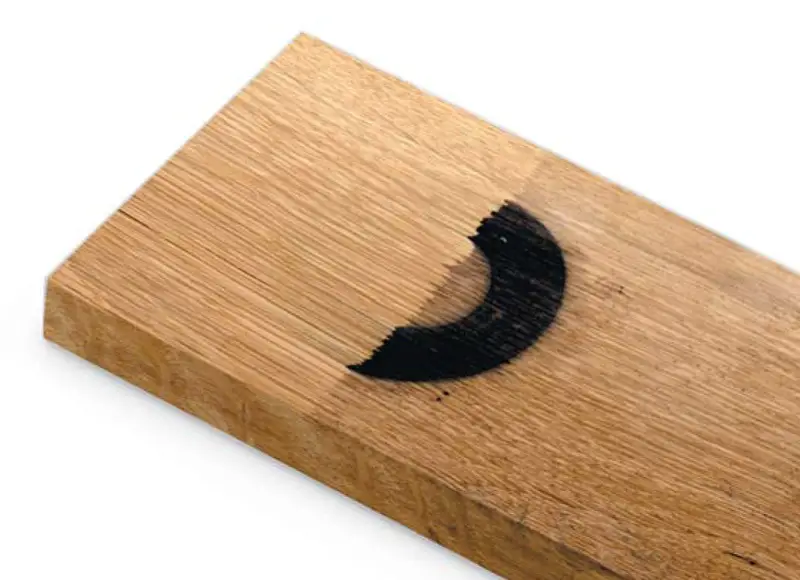
photo source: popularwoodworking.com
Albirea, procedeu folosit pentru a îndepărta colorațiile naturale ale lemnului
Wood bleaching este operația prin care se atacă substanțele colorante din structura lemnului, distrugându-le parțial. Ca urmare, culoarea naturală a lemnului se modifică parțial sau total, rezultatul fiind o suprafață mai deschisă decât cea inițială. Speciile care sunt supuse frecvent la astfel de tratamente sunt fagul, oak treeeven nuc.
The most commonly used materials for bleaching wood are soda caustică (hidroxid de sodiu) și apa oxigenată (perhidrol), which can be used mixed or separately. Dacă se folosesc împreună, substanțele se amestecă în momentul când se face albirea. O altă tehnică este aplicarea succesivă a celor două soluții, una peste alta. După încheierea reacției, dacă proporțiile sunt respectate, nu mai este nevoie de spălarea lemnul pentru că substanțele se neutralizează reciproc și se transformă în apă și bioxid de carbon. Dacă pentru albire se folosește doar soda caustică, trebuie foarte multă atenție și precauție pentru că este foarte corozivă. După aplicare, lemnul se spală foarte bine cu multă apă.
O altă metodă de albire este folosind perhidrol și o soluție de amoniac. Ambele sunt substanțe volatile, iar după utilizare nu rămân reziduuri și lemnul nu trebuie spălat. Amestecul este agresiv, iar pentru utilizarea lui este obligatorie purtarea echipamentului de protecție – mănuși, halat/combinezon, ochelari, mască.
Rezultatul dorit se obține foarte rar dintr-o singură etapă, uneori fiind necesare mai multe tratări succesive ale lemnului. Pentru unele cerințe de finisare, lemnul se tratează pană când devine aproape alb. În acest caz substanțele chimice nu sunt suficiente și este necesară combinarea tratamentului chimic cu folosirea unei paste pigmentate albe. Așa devin albe specii precum arțarul, mesteacănul sau plopul.
Albirea poate fi folosită și în scop artistic. Un exemplu este specia wenge, a cărui culoarea este un amestec de brun deschis și închis și negru. Prin albire este atacată doar fibra brun deschis care își schimbă culoarea în gri. Bolurile obținute din wenge supuse operației de albire capătă un aspect special, amintind de arta africană.
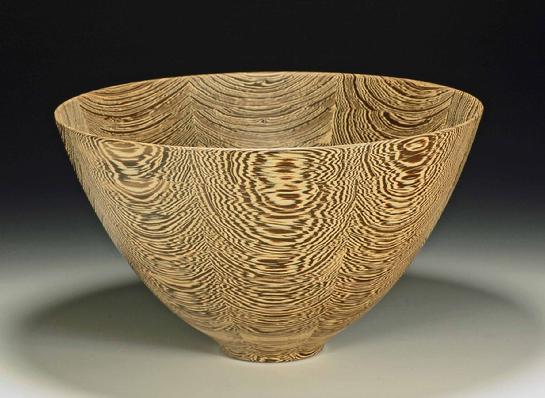
photo source: crestcreation.net
Finisajul ulterior poate fi influențat de albire. Atenție la neutralizarea/spălarea suprafeței lemnului!
După decolorare, lemnul trebuie lăsat 48 de ore înainte de finisare. Timpul este necesar pentru ca toate substanțele volatile să dispară, iar lemnul să se usuce după spălarea cu apă. Chiar dacă în majoritatea cazurilor nu rămân reziduuri, sunt materiale de finisare care sunt influențate de produsele folosite la albire. Este cazul catalizatorilor lacurilor poliuretanice, care se îngălbenesc vizibil la contactul cu produsele de albire. De aceea nu este recomandat ca lemnul albit chimic să se finiseze cu astfel de grunduri/lacuri. Cele recomandate sunt produsele acrilice. Acestea sunt recomandate și în cazul în care dorim un natural look of the wood.
ATENȚIE! Indiferent de metodă, trebuie să aveți în vedere că substanțele folosite la decolorarea și/sau albirea lemnului sunt agresive și pot face rău. De aceea trebuie să purtați echipament de protecție, să vă protejați mâinile și ochii. Foarte importantă este și masca pentru a nu inhala vaporii degajați în proces.
Informații suplimentare găsiți și în articolele albirea și decolorarea lemnului după îndepărtarea vechiului finisaj or când decolorarea și albirea lemnului se impun.
I hope you find the above information useful. As always, additions are welcome. And if you have any questions or queries, please leave them below in the space provided. I will be sure to reply.





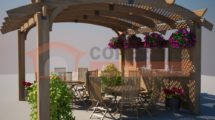
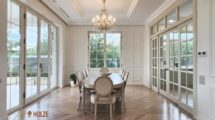





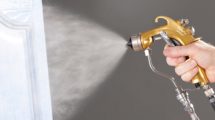


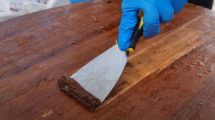

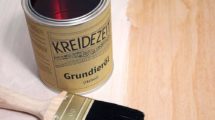

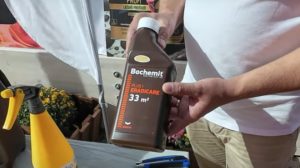
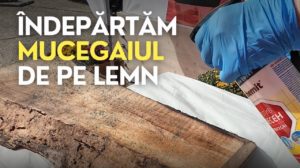









HELLO, I WOULD LIKE TO ASK YOU A QUESTION: HOW TO CLEAN A YELLOWED FILM, I MEAN THE KITCHEN FURNITURE THAT IS FINISHED WITH NITROCELLULOSE VARNISH. THANK YOU.
Good evening.
Unfortunately lakes also "age" over time. They turn yellow and this is most noticeable in nitrocellulose lakes. The process is irreversible, so the safe solution is to remove the existing varnish and apply another layer of varnish. Removing nitrocellulose varnish is not difficult. It can simply be washed off with thinner. If you are unable to take it to a factory for varnish removal, you can also do it at home with paint stripper bought from DIY stores. Apply the varnish with a brush, leave it for a while, then remove it with a scraper. Then sand the wood and apply 2-3 coats of varnish. Acrylic varnish is the most resistant to yellowing.
Good luck!
Hello, we have 90m2 of solid wood flooring. In the first phase it was light coloured and then we applied dark bait and varnish.
Is there any chance of returning to the original colour?
Will his defoliation affect the fault?
Or did the bath penetrate the wood structure? How can we initiate the colour opening process?
Good evening.
You should scrape it to remove both the lake and the bath. Being new flooring you should have no problems. The grout has penetrated the wood, but scraping removes a thin layer of wood, therefore removing the grout as well.
After sanding, replace the sandpaper with a thinner one, sand and apply the new bait and varnish or just varnish.
Unfortunately you don't have another way to open the color.
All the best!
Hello,
Can you recommend a restorer for antique furniture (12 pieces)?
Good evening!
I sent you an email.
All the best!
Good evening. I have a couple of windows that are blackened by time. How could I restore them, even just the fart, to their natural wood color? Thank you
Hello.
From what you are saying I can't tell if it is the appearance of blackness on the windows or the darkening of the windows.
If it's blackness then it's mould. It should be wiped well with a dry cloth and then with one soaked in cheap bleach. It is based on sodium hypochlorite, a mould enemy. It should remove that black colour and protect the wood for a while.
If it is the wood darkening, it means that the varnish used had no UV protection and the wood components have decomposed darkening the colour. You should sand to remove the finish and the layer of darkened wood. Under this layer the wood has its normal colour. Then use for finishing products containing a small amount of pigment (lacquers) or UV absorbers (exterior varnishes) that protect the wood.
All the best!
Don't forget to subscribe to the printed Wood Magazine! For only 58 lei/year you can find out news in the field, discover craft ideas or trade secrets. We remind you that the content in the printed magazine is different from the one on the website. Details in the link below.
Thank you!https://revistadinlemn.ro/product/abonament-revista-din-lemn/
Hello. We recently built our house and unfortunately the interior oak stairs have suffered. They have yellowed and there are marks left from the workers gluing stuff on them in order to protect them. By the time they were stripped off there was trace left, probably also from the windows and the sun. How can we make them have the original colour and shape? If you give me an email address I can send you the picture. Thank you!
Hello.
Wood changes colour in contact with oxygen in the air and UV radiation. The change starts immediately after cutting. And the lake changes colour over time, it ages, as we say. It's all the ozone and the sun or bright light that's to blame.
more than likely the colour has changed in areas where it has not been protected from the sun. Now that the other areas have been uncovered the color will unoform over time. The easiest thing to do is to wait for this to happen because otherwise you have to remove the finish and sand the wood to remove the top layer that is affected. After that you can refinish. If you apply a coloured varnish on top to even it out it will not look nice and you will not achieve evenness unless the colour is very dark.
You can send your photo to mihaela.radu@cesbrands.ro.
All the best!
Don't forget to subscribe to the printed Wood Magazine! For only 58 lei/year you can find out news in the field, discover craft ideas or trade secrets. We remind you that the content in the printed magazine is different from the one on the website. Details in the link below.
Thank you!https://revistadinlemn.ro/product/abonament-revista-din-lemn/
Hello,
I have a big problem with interior doors. Unfortunately, I made some bad choices. I wanted the steps and doors in the house as dark as possible (almost black). The problem is that I don't know what products to use to clean the doors so that there are no marks left on them. Can you give me some advice, please? Thanks
Good evening!
It's kind of hard, especially if they have gloss. Try applying a thin layer of colourless furniture wax on top. Apply simply with a rag. You just have to spread it very well. Waxed surfaces are easier to maintain.
All the best!
Don't forget to subscribe to the printed Wood Magazine! For only 58 lei/year you can find out news in the field, discover craft ideas or trade secrets. We remind you that the content in the printed magazine is different from the one on the website. Details in the link below.
Thank you!
https://revistadinlemn.ro/product/abonament-revista-din-lemn/
Good evening,
I want to scrape the hardwood floors in my son's room.
My question is if after refinishing can a bait or primer be applied to change the colour of the floor to a light grey (this is what my boy wants).
Only then apply the varnish.
Now the floor is brown and I don't think it has ever been scraped (old manor house).
Thank you in advance
Good evening!
Yes, you can bathe the wood after you scrape the floor. The scraping should be done in such a way that the old colour is removed. I recommend the use of a trowel for the application of the wood stain. Allow to dry before applying varnish. Then apply min 2 coats of floor varnish.
All the best!
Good evening,
I purchased 2 pieces of walnut lumber and they have some stains on them. I read the article but can't figure out if it's the traditional mold or the blue mold. Can I possibly send you some pictures to help me with this information? After the wood is cleaned with chlorine or hydrogen peroxide is there still a possibility that the mould will reappear if the wood is kept in a dry environment? In case of blue mold is 35% hydrogen peroxide and 65% water added? How long should this solution stay on the wood? Afterwards, do you just clean it with water or do you have to sand it?
Thank you,
Andrei Veres
Good evening!
The blue mould is seen as a stain that is part of the wood fibre. It is not uniform, it can appear as if an annual ring is coloured. Regular mould is dark grey or black and no longer creates the impression that it is part of the wood but looks more like a stain. Regular mould is easier to get rid of than blue mould. When a wood is attacked by blue mould, changes in the wood's properties also occur, the changes are more profound, not just in colour. Blue mould is a wood disease.
If the wood is well cleaned, dry, kept in a place without moisture and where there are draughts, black mould will not appear. Mould appears on wood as it does on the wall - if there is a source of moisture and no draught to allow it to dry.
For blue mould you should try more aggressive solutions: caustic soda:pehidrol 2:1 (this is the classic A+B solution of commercially available wood bleach) or perhydrol and ammonia (solution 35%). Perhydrol and ammonia are not mixed but applied with a brush on top of each other. Apply hydrogen peroxide first, in excess, then apply the ammonia. After 2 hours wash off with plenty of water and allow to dry.
The combinations of substances used neutralize each other and it is enough to wash with plenty of water to remove the resulting salts and let dry. If you use basic solutions (caustic soda) neutralize with weak acids (vinegar). Afterwards wash with plenty of water. There is no need to sand after bleaching with chemicals.
You can send me photos to my email address mihaela.radu@cesbrands.ro
All the best!
Hello! I have a white wooden table and a little girl has stained it with spirt and the shape of the tablecloth has printed, what can I use to remove it? Thank you
Hello!
Try to tread on the surface. Place a piece of kneaded material on the surface and run a hot iron over it a few times. Pick up the material and let it cool. Check the area and if the situation seems to have improved, repeat the operation until the signs disappear.
If it doesn't work with the iron, it means the area is more seriously affected. You should sand with 280 or 320 grit sandpaper or a fine abrasive sponge until the defect disappears. Afterwards polish the entire surface with a white furniture wax cloth. If the defect is deep and you have reached the wood or in the area where the sanding was done there is a visible hole, you will have to sand the entire table top and apply a coat of white nitrocellulose or water-based paint.
All the best!
Hello
A few years ago I scraped the floor and then applied 3 coats of Palux.
Not long after (approx. 2 years) he was submerged.
From the article I understand it is black mold.
Please advise me what to do to remove the mould, apply a treatment to increase the resistance of the wood to water and mould, what finish to apply (please indicate which one).
Thank you.
Good evening!
There must have been cracks in the varnish film or the wood had pulled water from somewhere and mold had formed.
Against mould you can find effective products at Bochemit.
In order not to continually repair where black spots appear, you will need to scrape the entire package, treat it with Bochemit's solution against mold and mildew, and after drying, apply 2-3 coats of floor varnish.
You should check that there is no source of condensation or dampness under the floor. Seek the advice of a flooring specialist (other than the first one) to see if it has been fitted correctly.
All the best!